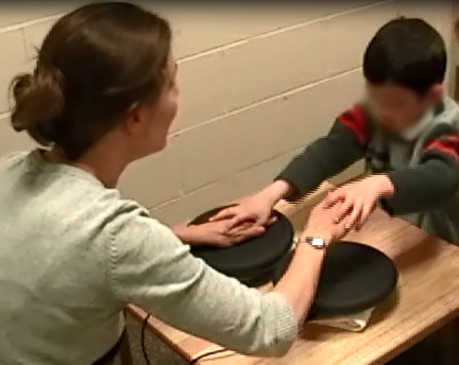(editor’s note: this article was written independent of the Journalism class. Any personal opinions expressed in the article or further research are that of the author, and do not necessarily reflect the views of The Current or its staff.)
By: Kian Mostoufi, Independent Contributor
Imagine living a life in which you are able to think and feel, but are not able to communicate those feelings with anyone else, constantly growing more frustrated because nobody seems to understand you. Unfortunately, this describes a major struggle for nonverbal children with autism. Millions of children worldwide are negatively affected by autism, also known as Autism Spectrum Disorder (ASD), which causes challenges in social, behavioral and communicational aspects of daily life. About 25-30% of these children are unable to use spoken language to communicate with others.
A new solution that has recently caught many peoples’ attention is music-based treatment, specifically Auditory-Motor Mapping Training (AMMT), a music-based treatment which combines singing and tapping on a pair of tuned drums to encourage nonverbal children to begin speaking. The treatment is performed by a speech therapist, who introduces the target words or phrases by singing the words and tapping the drums at the same time. This sets up a call-and-response with the drums and singing, eventually leading the child to be able to utter the phrases individually.
Although this may seem far fetched, the treatment is responsible for significant amounts of growth regarding the language development of children with autism. According to a 2011 study, children could increase their amount of correctly spoken target words by up to 71%, despite not being able to speak any words prior to treatment. They were also able to increase the amount of speech both trained (practiced) and untrained (spontaneous) by up to 60%.
How does this therapy work? The treatment connects audio feedback to motor action by tapping drums and singing at the same time. This engages and develops a tract in the brain making connections that are vital to speech, which is why the treatment works so well. Additionally, AMMT takes advantage of the motivational and enjoyable aspects of music that attract many children, allowing them to enjoy the therapy. Since they enjoy music, they are learning without much effort, and stay engaged, also leading to increased results in language.
AMMT has potential to be a very effective method of treatment, and could be a solution to help improve the quality of living for nonverbal children with autism in the future. The implementation of this treatment could help millions of nonverbal children acquire satisfactory levels of speech. So as annoying as “Old Town Road” might be, songs like this could be the missing link for children with autism.

